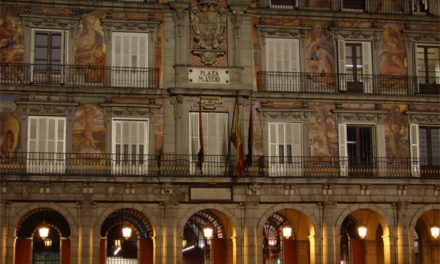UPDATE – March 4, 2010
- View: U.S. Travel Promotion Act Signed into Law; International Travelers to Fund Marketing Campaign
by Rob Hard, February 17, 2010
Roughly 47 million international business and leisure travelers chose to visit the U.S. in 2009 (excludes Mexico) – a decline of about 6%, and the amount they spent dropped by 15% to about US$122 billion (includes Mexico), according to data from the U.S. Office of Travel & Tourism Industries, Washington, DC. In general, overseas travelers spend about US$4,500 per trip to the U.S., according to the US Travel Association (USTA).
This is important to know because 54 U.S. Senators and 112 Representatives have signed on to co-sponsor the U.S. Travel Promotion Act (as of September 30, 2009). If approved, the legislation would create a non-profit corporation to promote U.S. tourism and help explain security and entry policies into the country.
Advocates say this is needed because the U.S. tourism industry has a problem: a national marketing strategy to welcome international travelers doesn’t exist. The legislation is now with the Senate for final approval before being sent to the President, so it’s only a matter of time when it will be enacted, according to a USTA spokesperson.
“The decline in overseas travel to the United States post-9/11 is directly linked to the mistaken, but widespread perception that visitors are not as welcome as they may have been previously and that many security policies are intrusive and unnecessary,” the USTA spokesperson says.
Funding for its US$100 million budget would be covered through a new US$10 fee charged to international visitors from the 35 countries that participate in the Visa Waiver Program. The fee would be assessed once every two years, allowing unlimited visits into the U.S. during that time.
While this may sound nominal, it’s something that has many people from those countries upset, says Steve Lott, spokesperson for the International Air Transport Association (IATA), Washington, DC.
“Other countries charge their entry/exit fees every time you enter,” the USTA spokesperson explains. “The US$10 fee is far lower than similar fees — ranging from Ireland’s US$14 entry tax to the UK’s whopping US$100 — paid by Americans when they travel abroad. And with a mere 35 countries that would be required to pay the fee, fewer than 30% of foreign travelers will be affected.”
The USTA’s reference to the UK may be appropriate; however, the UK’s Air Passenger Duty (tax) is viewed quite controversially, and some in the UK are concerned that it will negatively impact tourism. The UK introduced a small fee to generate needed revenue in 1993, and the tax has grown significantly since then. And just because someone else charges a fee isn’t enough of a reason for others to follow.
The IATA has taken a position against the new U.S. fee, saying that an entry or exit fee charged by other countries is a matter of comparing apples to oranges: none of the 35 countries have a tourism-specific fee.
IATA isn’t the only business travel organization against the fee. The National Business Travel Association (NBTA) doesn’t support it either “because it taxes the traveler to pay for an item that doesn’t tangibly benefit the traveler,” says Shane Downey, director of public policy for the NBTA, Alexandria, Virginia.
Some definite benefits exist for establishing a nonprofit corporation, including federal funding up to US$100 million to develop and execute a marketing plan for U.S. tourism to the international travel market.
Still, I’m scratching my head and wondering why the U.S. isn’t covering the cost of such a program from existing tax receipts? US$122 billion spent during a bad year – including significant hospitality and sales taxes – and the government can’t find any funding for an international tourism campaign? They want to levy another fee on those visitors?
Advocates of the legislation say the marketing initiative is necessary because the U.S. isn’t spending money to promote itself. But that’s simply misleading.
U.S. cities and states do promote themselves to the international marketplace for leisure and business travel.
I observe the business travel industry from a marketer’s perspective, and believe that many U.S. destinations could do much more to establish a unified message.
For example, 22 U.S. cities and states exhibited separately in 2009 at IMEX, a worldwide exhibition for the business travel and meetings industry held in Frankfurt, Germany. The marketing problem is that other countries establish a more unified presence by creating single pavilions to promote their cities and to conduct business.
Combined, the U.S. exhibits comprised as much space as the sixth largest country exhibiting at the show, but you would have never known it.
I wonder why their marketing folks have not or will not pick up the phone and call their counterparts to fix the situation directly? A national tourism office shouldn’t be needed for that. As a marketer, that’s what I would do. And I’m only a phone call away if anyone needs the help of my marketing firm to make this happen.
And as for a welcoming message, if the more than 50 million visitors who come to the U.S. don’t already know, please enjoy your stay and feel free to come back sometime soon.















